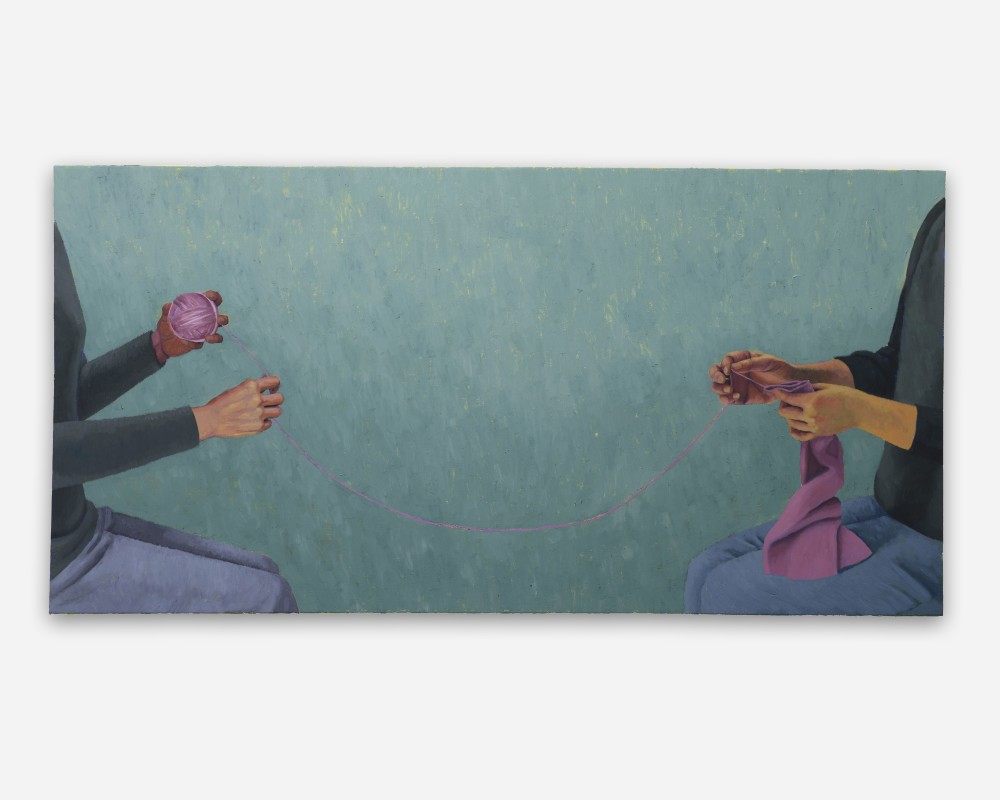
IN SITU: Rebecca Xiangjie Wu Joy of Yesterday
In the second exhibition of the In Situ series we are excited to show Joy of Yesterday, from Chinese-born, Brooklyn-based artist Xiangjie Rebecca Wu. These new paintings capture small moments of memory of Wu’s bitterness and freedom from her childhood living in rural China in a small town on the Yangzte river. Trivial objects and obscured figures create calm vignettes in oil painting for the viewer to ponder.
Her paintings provide you with the familiar to take you into her childhood memories. Despite the title these paintings are not just of warm nostalgic fondness. Wu uses cool muted tones to create a solemn mood and imagery that depicts childhood loss; not grave moments of trauma, but the small things that feel unjust to the innocent. The colors sit calmly on the canvas and put the viewer into the space to meditate on these moments of care and loss.
In each of Wu's paintings, there is a shard of tactility to gather. Something that you can grab onto with your own skin or eyes. Whether it is the feeling of cracking pistachios, pinching wontons or the bright light of a single bulb in a dark room, you can feel the objects in the work somewhere in the back of your mind. They dig deep into your own memories; who cannot envision the feeling of running hands along thin drapes or bare feet on a tile floor. Throughout the show, hands relay signs of fallibility, things are dropped and let go, the hands she does show seem to strain and quiver in exhaustion from maintaining their delicacy. Even the hands that are caring about their tasks falter and must let go. Rebecca Wu draws inspiration from the poet Louise Glück and in the final lines of her poem, The Garden, Wu’s pieces fall into place
“even here, even at the beginning of love,
her hand leaving his face makes
an image of departure
and they think
they are free to overlook
this sadness”
The poem draws sadness from even the budding of new love. She turns the moment of embrace of a young couple into a moment of loss as while she holds his face for a moment, it still must be pulled away. At the moment, they are ignorant to the fact that time is fleeting, yet it is. Wu parallels this fleeting romance and the inevitability of letting go to her own tightly held emotions of her past. Tender and melancholic memories intertwined are both meant to be forgotten as she continues to live.
Xiangjie Rebecca Wu (b. 1998. Jiangyin, Jiangsu, China) is an artist based in Brooklyn. Her figurative painting draws from her personal memory and daily experience. By visualizing and memorializing the lost time and land, her painting evokes contemplation on memory, selfhood, loss, and the palpable fear of insecurity that permeates our existence. She received a B.A. with a double major in Studio Art and Philosophy at the College of Wooster in 2022. Her works were collected by the College of Wooster Art Museum in 2022. She graduated from Pratt Institute with an MFA degree in 2024. Her work has been shown in 1969 Gallery, NY; Scroll, NY; Latitude Gallery, NY; Marvin Garden, NY; Eleventh Hour Gallery, NY; Cinema Supply, NY; and Art021, SH.
About In Situ
The exhibition series In Situ is an homage to Daniel Buren’s pioneering exploration of the evolving relationship between art, architecture, and lived experience. The first exhibition of the series is presented in a former apartment unit in Downtown Los Angeles. By transforming a former apartment that overlooks the Los Angeles urban skyline into an exhibition site, In Situ underscores the intimate and dynamic possibilities of art presented outside conventional white cube contexts, engaging directly with the space’s atmosphere, physicality and community.
The concept of In Situ—“in its original place”—derives from a practice deeply rooted in the specificity of location. Daniel Buren’s interventions disrupted the neutrality of exhibition spaces, insisting that context shapes meaning. This series starts with extending that lineage, curated artist’ work to respond to the living space: its industrial architectural details, domestic resonances, and layered memories. Here, the artworks are not simply placed within a space but activated by it, forging dialogues between object, viewer, and environment.